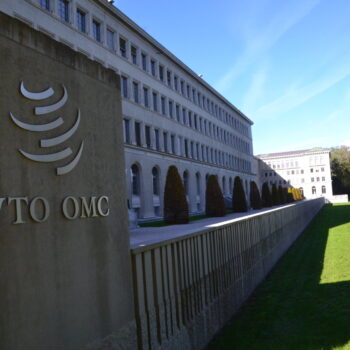In living memory, oil and gas price spikes have generated systemic economic shocks with wide economic and social repercussions. In the 1970s, real oil prices increased 500% causing stagnation of economic growth and increased energy bills for households and industries throughout Europe. In 2009, Gazprom cut off all gas supplies to Europe travelling through Ukrainian pipelines for two weeks, exacerbating the political and economic crisis that had arisen out of a dispute over payments thus threatening EU gas supply. As the crisis in Ukraine reminds us, the risk exposure of the EU to external shocks, such as high gas prices and supply disruptions, remains high. The EU 2030 framework is a unique opportunity to accelerate the development of low-carbon generation and network infrastructure that would make the EU power system less dependent on expensive fossil fuel imports and more resilient to shocks.
In many discussions, shale gas is now touted as a ‘third way’ to increase security of supply and diversify away from Russian gas imports. However, it would be risky to count on shale as a silver bullet. Estimates of economically-recoverable reserves in Europe are highly uncertain and studies show that shale gas will not have a very significant impact upon energy security in practice, covering potentially only 5% of EU energy supply by 2030. In a letter to the US House Speaker John Boehner, the Visegrad countries asked to remove bureaucratic hurdles and make it possible to start exporting US shale gas to the region. Yet shale reserves in the US are depleting more quickly than expected. The question of how much gas is actually there and exportable without compromising US aspirations of energy independence and undermining US energy security is not trivial. The violent spikes in US gas prices induced by the recent extreme cold weather, the so-called ‘polar vortex’, have led to many industrial shutdowns and have increased demand for domestic gas.
While Barack Obama describes shale gas as “the transition fuel that can power our economy with less carbon pollution”, the shale myth is weakening the EU’s commitment to renewable energy and threatens to increase Europe’s reliance on fossil fuels. The EU’s dependence on energy imports has already increased significantly over the past decades, rising from 40% to 54% between 1990 and 2011. Today, one third of Europe’s gas comes from Russia, 16% of which is piped through Ukraine. Over the past decade, efforts have been devoted by Heads of Government together with the EU Commission to develop energy strategies to reduce dependence on insecure Russian gas supplies. In 2008, the North Seas Countries Offshore Grid Initiative was launched by a number of energy ministers with the aim of developing a framework for grid development that would allow for the exploitation of vast indigenous resources in the North Seas region, namely a basin of up to 250 GW of onshore and offshore wind capacity to be developed by 2030.
However, without a strong 2030 framework setting out future generation and network needs, wind power and market integration in the North Seas will remain a lost opportunity while EU import dependency will increase. In fact, it is impossible to develop cost effective proposals for grid planning and regulatory design without a clear view of the future. And yet in spite of the uncertainty there is an unprecedented level of investment interest in offshore interconnection and offshore wind projects which, if completed in full, would enable a transformational level of low-carbon generation and trading in the region. Many of the projects, however, face pervasive regulatory uncertainty and political risk, so that a number may not be realised. This is exacerbated by low visibility on energy and climate policies by 2030 and the lack of a clear basis for anticipatory investment.
To increase security of supply and reduce import dependency through large-scale deployment of offshore wind generation in the North Seas, a new approach to the grid development is needed. The new 2030 climate and energy package should therefore prioritise delivery of a core strategic European infrastructure network, through new infrastructure targets for 2030. Such targets must have clear delivery mechanisms and be better tailored than the 2002 Barcelona objective for interconnection to represent 10% of national generation capacity (see suggested options for 2030 infrastructure targets).
The 2030 framework also provides an opportunity to give new impetus to regional approaches such as the North Seas Countries Offshore Grid Initiative. While Europe’s vulnerability to energy resource shocks is at the forefront of the minds of decision-makers, it’s time for a rethink of the institutions and tools needed to bring forward development of indigenous renewable energy sources.
For more information see the North Seas Grid showcase.


